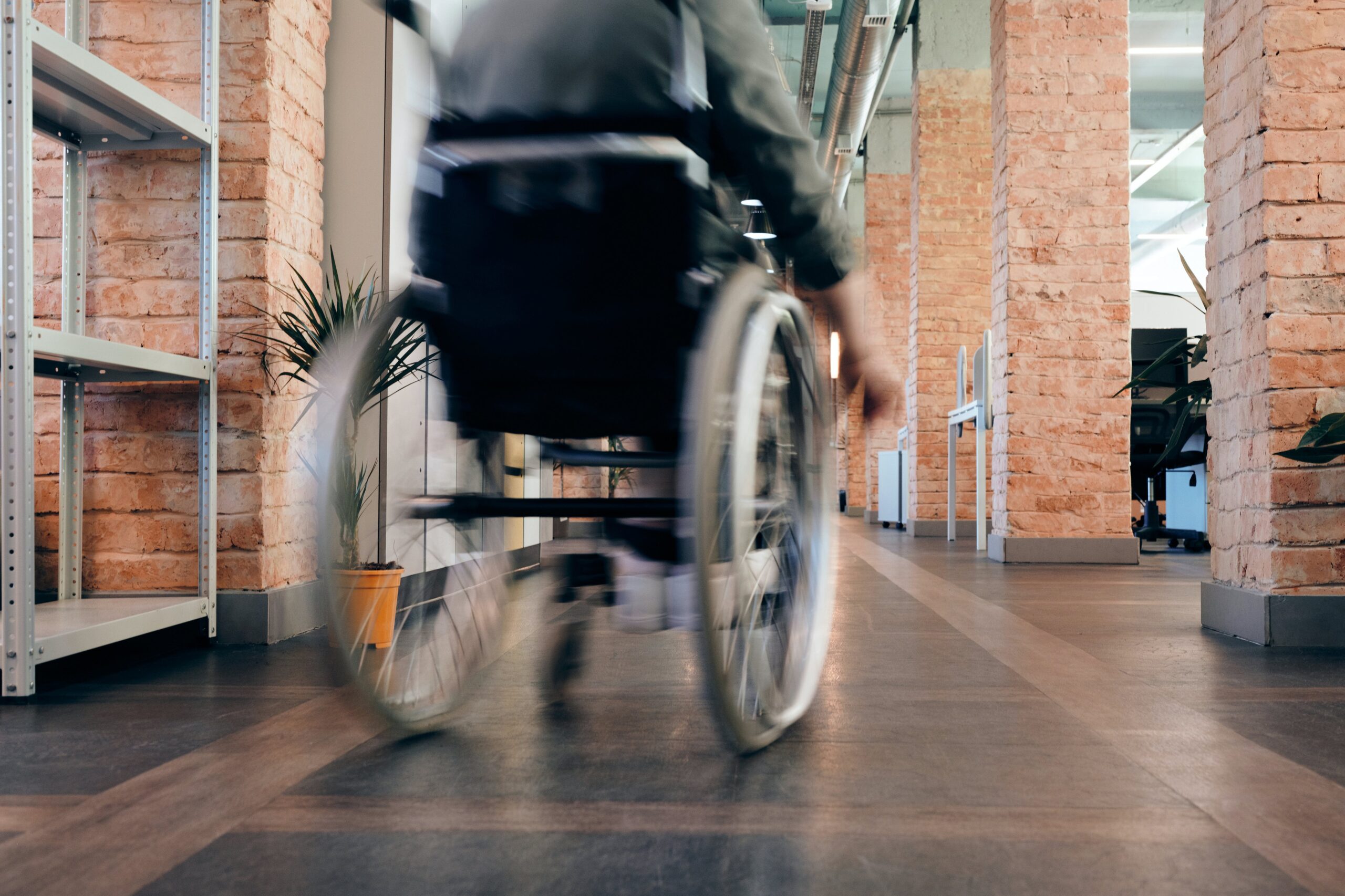Turbulence and Passengers with Special Needs: What You Need to Know

Turbulence is a common occurrence during air travel that can cause discomfort and anxiety for many passengers. For individuals with special needs, turbulence can be especially challenging and potentially dangerous. This article will explore the impact of turbulence on passengers with special needs and the measures that airlines take to ensure their safety.
Passengers with special needs include individuals with disabilities, medical conditions, and mobility limitations. Turbulence can exacerbate these conditions and make air travel more difficult. For example, individuals with autism or sensory processing disorders may become overwhelmed by the noise and movement caused by turbulence. Passengers with mobility limitations may struggle to maintain their balance during turbulence, increasing the risk of falls and injuries.
To ensure the safety of all passengers, airlines are required to comply with laws and regulations related to air travel and disability. These laws include the Air Carrier Access Act and the Americans with Disabilities Act, which require airlines to provide accommodations and assistance to passengers with disabilities. Airlines also have their own policies and procedures for handling passengers with special needs during turbulence, such as providing extra assistance and ensuring that passengers are seated in appropriate areas of the airplane.
Understanding Turbulence

Turbulence is a common occurrence during flights, and it can be a concern for passengers, especially those with special needs. It is important to understand what turbulence is, its causes, and the safety measures that are in place to ensure passengers’ safety.
Causes of Turbulence
Turbulence is caused by a variety of factors, including jet streams, thunderstorms, and changes in air pressure. Jet streams are fast-moving air currents that can cause turbulence when an aircraft flies through them. Thunderstorms can also cause turbulence due to the updrafts and downdrafts they create. Changes in air pressure can cause turbulence when an aircraft passes through different layers of air with different temperatures and densities.
Turbulence Safety Measures
To ensure passengers’ safety during turbulence, airlines and the Federal Aviation Administration (FAA) have implemented safety measures. One of the most important safety measures is the use of seat belts. Passengers are required to keep their seat belts fastened at all times during the flight, even when the seat belt sign is turned off. This is because turbulence can occur unexpectedly, and seat belts are the best way to keep passengers safe.
Pilots also play a crucial role in ensuring passengers’ safety during turbulence. They are trained to avoid turbulence whenever possible and to fly through it safely when necessary. They also provide updates to passengers about turbulence and advise them to keep their seat belts fastened.
Passengers seated in emergency exit rows have additional responsibilities during turbulence. They must be able to operate the emergency exit door in case of an emergency, and they must be willing and able to assist other passengers in the event of an evacuation.
Overall, turbulence is a normal part of flying, and passengers should not be overly concerned about it. By following the safety measures in place, passengers can ensure their safety during turbulence.
Related Posts:
Legal Rights and Accommodations

Passengers with special needs have legal rights and are entitled to certain accommodations when traveling by air. Two important laws that protect the rights of passengers with disabilities are the Americans with Disabilities Act (ADA) and the Air Carrier Access Act (ACAA).
Americans with Disabilities Act
The ADA is a federal law that prohibits discrimination against individuals with disabilities in all areas of public life, including air travel. Under the ADA, airlines are required to provide accommodations to passengers with disabilities, such as wheelchair assistance, seating accommodations, and communication assistance.
Passengers with disabilities are also entitled to file complaints with the U.S. Department of Transportation (DOT) if they feel that their rights have been violated. The DOT is responsible for enforcing the ADA and ensuring that airlines comply with its regulations.
Air Carrier Access Act
The ACAA is a federal law that specifically addresses the rights of passengers with disabilities when traveling by air. Under the ACAA, airlines are required to provide a range of accommodations to passengers with disabilities, including accessible boarding and deplaning, seating accommodations, and assistance with stowing and retrieving carry-on items.
The ACAA also requires airlines to make certain disclosures about their policies and procedures for accommodating passengers with disabilities. Passengers with disabilities can file complaints with the DOT if they feel that an airline has violated their rights under the ACAA.
Overall, passengers with special needs have legal rights and are entitled to certain accommodations when traveling by air. By understanding these laws and regulations, passengers with disabilities can ensure that they are able to travel safely and comfortably.
Special Needs and Air Travel

Air travel can be a daunting experience for anyone, but it can be especially challenging for passengers with special needs. Whether it’s a physical disability, medical condition, or anxiety, there are various factors that can make air travel difficult. Here are some tips for passengers with special needs to make their air travel experience smoother:
Preparing for the Flight
Passengers with special needs should inform the airline in advance of any accommodations they may require. This can include wheelchair assistance, special seating arrangements, or accommodations for service animals. Airlines are required by law to provide accommodations for passengers with disabilities, so it’s important to communicate any needs in advance.
Passengers should also make sure they have all necessary medical documentation and medications with them on the flight. This can include doctor’s notes, prescriptions, and medical equipment. It’s important to check with the airline in advance to ensure that any medical equipment is allowed on the flight.
During the Flight
Passengers with special needs should familiarize themselves with the aircraft and its features before the flight. This can include practicing how to use the seat belt and finding the location of emergency exits. Flight attendants are available to assist passengers with any questions or concerns during the flight.
Passengers with anxiety or autism may benefit from using noise-cancelling headphones or bringing along comfort items such as blankets or stuffed animals. It’s important to communicate any needs to the airline in advance so they can make necessary accommodations.
Connecting Flights and Layovers
Passengers with special needs should plan for extra time during connecting flights and layovers. This can include arranging for wheelchair assistance or allowing extra time to navigate the airport. It’s important to communicate any needs to the airline in advance so they can make necessary accommodations.
Overall, air travel can be challenging for passengers with special needs, but with proper planning and communication, it can be a positive experience. Passengers should not hesitate to ask for assistance or accommodations as needed.
Related Posts:
Airport Security and Special Needs
TSA Screening Procedures
Passengers with special needs may require additional screening procedures at airport security checkpoints. The Transportation Security Administration (TSA) has specific guidelines in place to ensure that all passengers, including those with disabilities or medical conditions, are screened in a respectful and efficient manner.
TSA agents are trained to provide assistance to passengers with special needs, including those who require a pat-down or additional screening of medical equipment or devices. Passengers who have an ostomy bag can request a private screening and are not required to remove the device.
It is important for passengers with special needs to notify TSA agents of any medical conditions or devices prior to screening. This can help to ensure that the screening process is as smooth as possible and that any necessary accommodations are made.
Passengers with special needs may also request to be screened in a different manner, such as through a metal detector instead of a full-body scanner. The TSA has a notification card that can be presented to TSA agents to request a specific type of screening.
In summary, the TSA has specific procedures in place to ensure that passengers with special needs are screened in a respectful and efficient manner. Passengers should notify TSA agents of any medical conditions or devices prior to screening and can request a private screening or a different type of screening if necessary.

